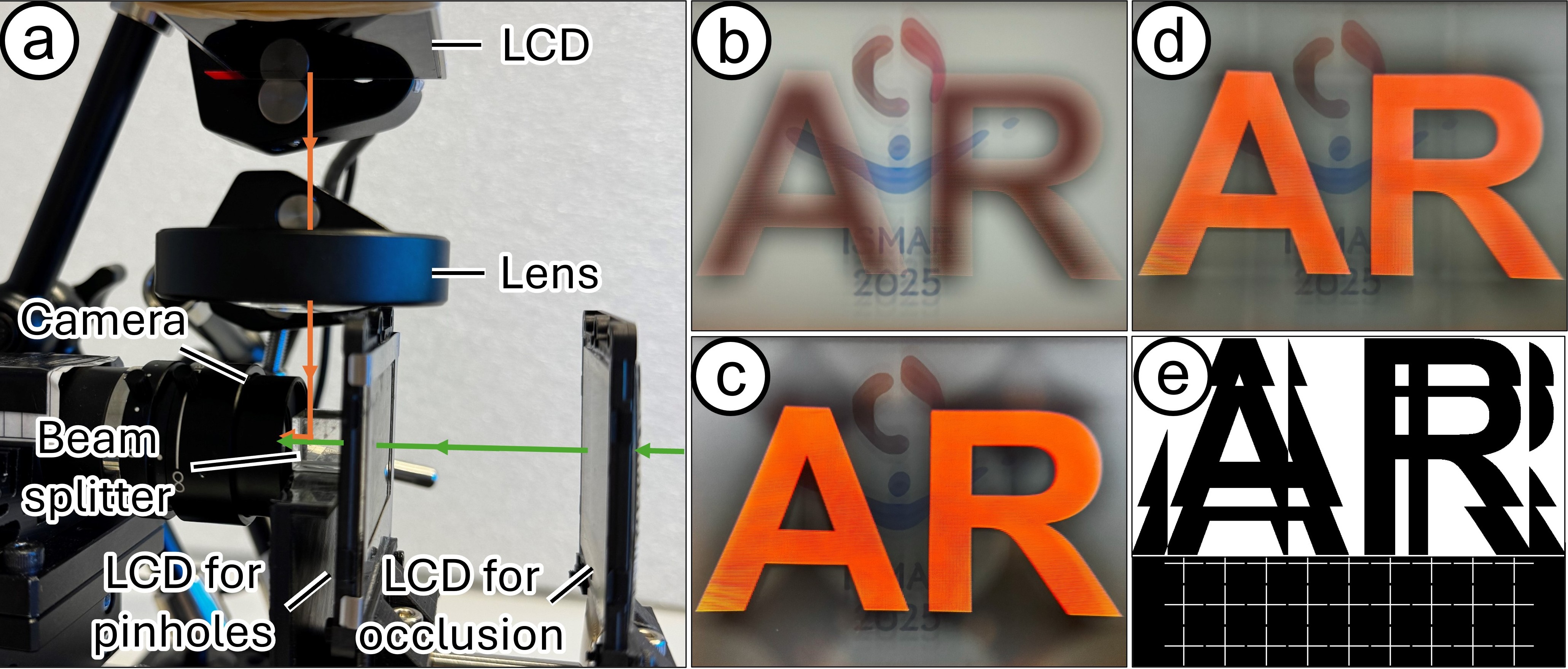X-Mask: Improving Soft-Edge Occlusion in Optical See-Through Displays with Cross-Shaped Pinholes

Our pinhole-array-based occlusion display (a) is capable of occluding the real world with minimal bleeding. Compared to conventional displays with a single-layer occlusion mask (b), and circular pinholes (c), our system generates a delinated occlusion mask around the virtual content, leading to high contrast and minimal bleeding of the occluded area (d). By modulating the shape of the pinholes (e, bottom) and the occlusion pattern (e, top), we balance occlusion bleeding with retinal tiling resulting in a more uniform mask with higher contrast.
Abstract
Placing a transparent liquid crystal display (LCD) into the light path is a simple approach to create occlusion-capable optical see-through head-mounted displays (OST-HMDs) that suffers from defocused (soft-edge) occlusion where the mask leakage partially occludes surrounding content as well. Creating a focused (hard-edge) occlusion that does not suffer from mask leakage requires complicated, bulky optical setups. We present X-Mask, a pinhole-array-based OST-HMD that creates a sharp occlusion mask without the need for a bulky setup requiring only two transparent LCD layers. By rendering a pinhole array on the layer closer to the user's eye, our system functions as a programmable aperture layer that extends the effective depth of field and improves the sharpness of the occlusion mask rendered on the second LCD layer. Utilizing a conventional circular pinhole would result in non-uniform brightness and contrast. By changing the pinhole shape to a cross enables near-optimal retinal tiling with reduced overlaps and gaps. To accommodate pupil size variation, focus distance, and gaze direction, our system design allows for gaze-contingent adjustment of both LCD layers. We validate X-Mask in simulations and a physical prototype showing improved occlusion sharpness and visual uniformity.
Main Contributions
- We propose X-Mask, a novel pinhole-array-based occlusion display to mitigate the severe defocus inherent in soft-edgeocclusion displays, maintaining a wearable form factor and large FOV.
- We introduce a cross-shaped pinhole design that allows near-optimal retinal tiling with reduced gaps and overlaps,
- We analyze the imaging characteristics of cross-shaped pinholes and occlusion masks, and derive optimal layout parameters that balance visual uniformity and occlusion sharpness. These design insights are implemented and validated in a physical prototype through both simulation and see-through photographs




